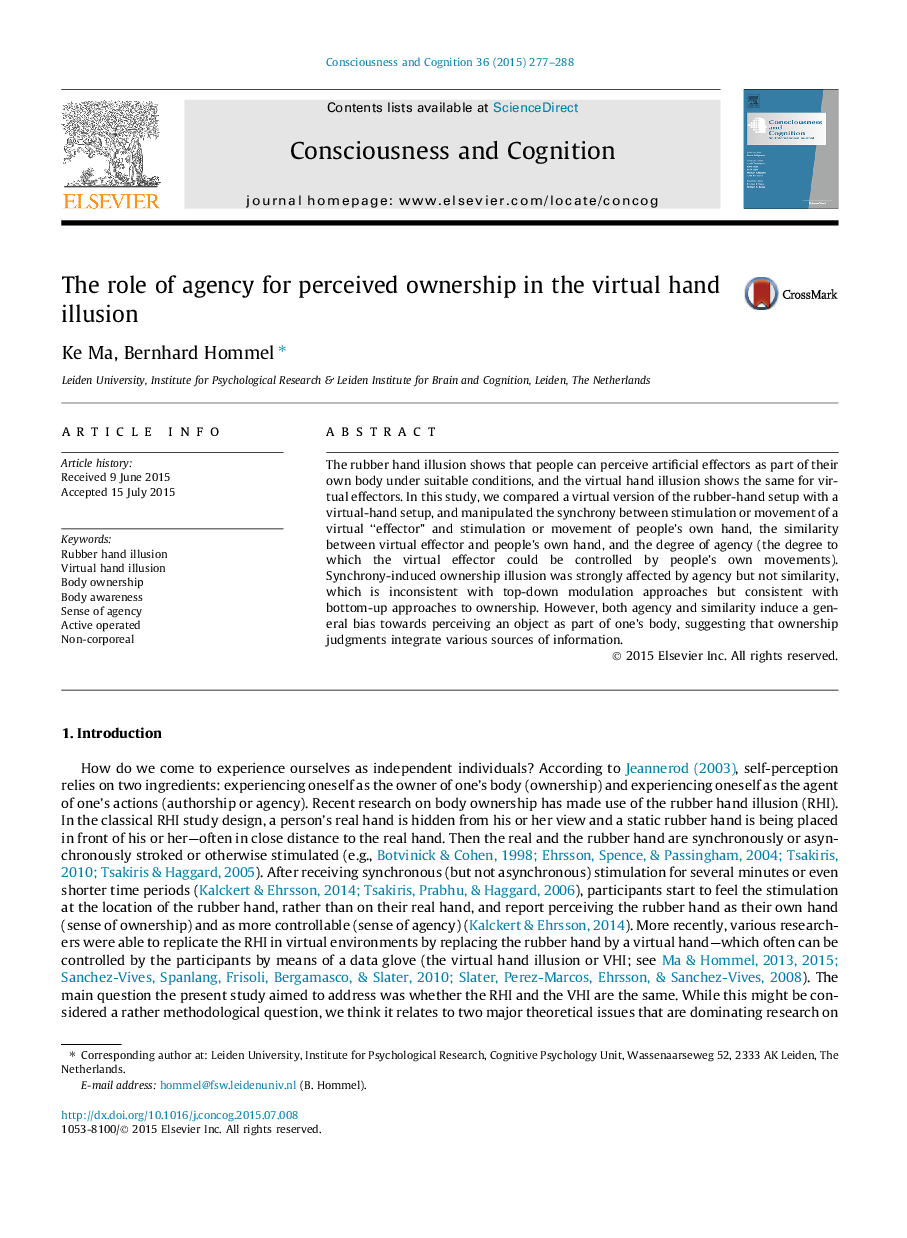| Article ID | Journal | Published Year | Pages | File Type |
|---|---|---|---|---|
| 7289107 | Consciousness and Cognition | 2015 | 12 Pages |
Abstract
The rubber hand illusion shows that people can perceive artificial effectors as part of their own body under suitable conditions, and the virtual hand illusion shows the same for virtual effectors. In this study, we compared a virtual version of the rubber-hand setup with a virtual-hand setup, and manipulated the synchrony between stimulation or movement of a virtual “effector” and stimulation or movement of people's own hand, the similarity between virtual effector and people's own hand, and the degree of agency (the degree to which the virtual effector could be controlled by people's own movements). Synchrony-induced ownership illusion was strongly affected by agency but not similarity, which is inconsistent with top-down modulation approaches but consistent with bottom-up approaches to ownership. However, both agency and similarity induce a general bias towards perceiving an object as part of one's body, suggesting that ownership judgments integrate various sources of information.
Related Topics
Life Sciences
Neuroscience
Cognitive Neuroscience
Authors
Ke Ma, Bernhard Hommel,
